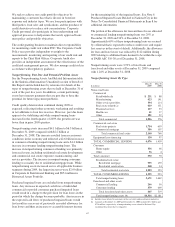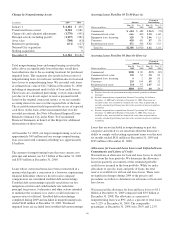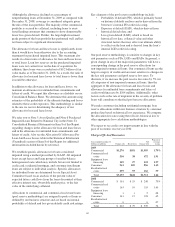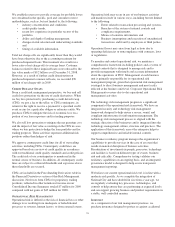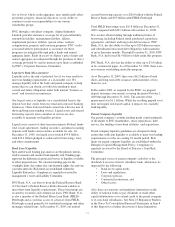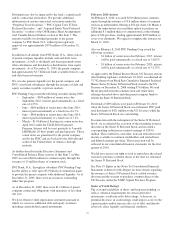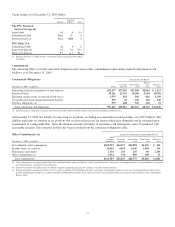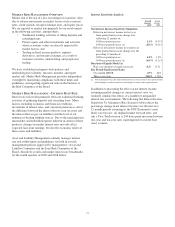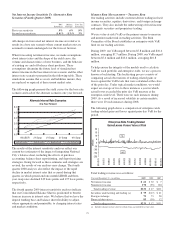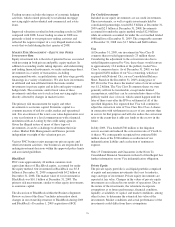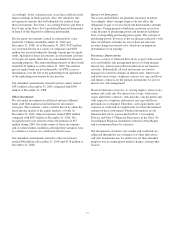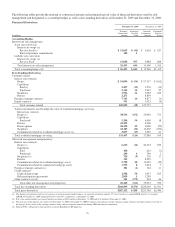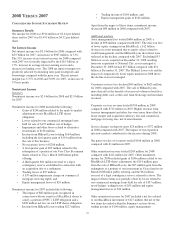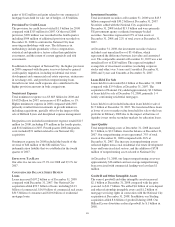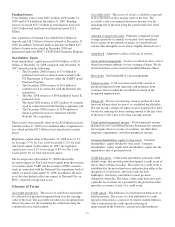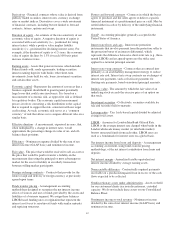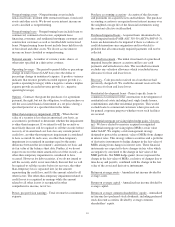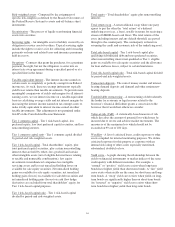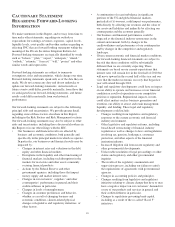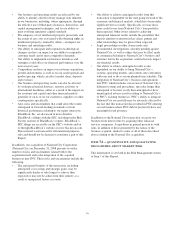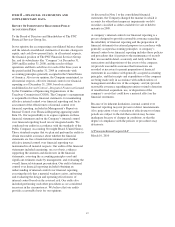PNC Bank 2009 Annual Report Download - page 81
Download and view the complete annual report
Please find page 81 of the 2009 PNC Bank annual report below. You can navigate through the pages in the report by either clicking on the pages listed below, or by using the keyword search tool below to find specific information within the annual report.Accordingly, lower valuations may occur that could adversely
impact earnings in future periods. Also, the valuations may
not represent amounts that will ultimately be realized from
these investments. See Note 1 Accounting Policies and Note 8
Fair Value in the Notes To Consolidated Financial Statements
in Item 8 of this Report for additional information.
Private equity investments carried at estimated fair value
totaled $1.2 billion at both December 31, 2009 and
December 31, 2008. As of December 31, 2009, $595 million
was invested directly in a variety of companies and $589
million was invested indirectly through various private equity
funds. Included in direct investments are investment activities
of two private equity funds that are consolidated for financial
reporting purposes. The noncontrolling interests of these funds
totaled $135 million as of December 31, 2009. The indirect
private equity funds are not redeemable, but PNC receives
distributions over the life of the partnership from liquidation
of the underlying investments by the investee.
Our unfunded commitments related to private equity totaled
$453 million at December 31, 2009 compared with $540
million at December 31, 2008.
Other Investments
We also make investments in affiliated and non-affiliated
funds with both traditional and alternative investment
strategies. The economic values could be driven by either the
fixed-income market or the equity markets, or both. At
December 31, 2009, other investments totaled $824 million
compared with $853 million at December 31, 2008. We
recognized net losses related to these investments of $37
million during 2009. Given the nature of these investments
and if current market conditions affecting their valuation were
to continue or worsen, we could incur future losses.
Our unfunded commitments related to other investments
totaled $66 million at December 31, 2009 and $178 million at
December 31, 2008.
I
MPACT OF
I
NFLATION
Our assets and liabilities are primarily monetary in nature.
Accordingly, future changes in prices do not affect the
obligations to pay or receive fixed and determinable amounts
of money. During periods of inflation, monetary assets lose
value in terms of purchasing power and monetary liabilities
have corresponding purchasing power gains. The concept of
purchasing power, however, is not an adequate indicator of the
effect of inflation on banks because it does not take into
account changes in interest rates, which are an important
determinant of our earnings.
F
INANCIAL
D
ERIVATIVES
We use a variety of financial derivatives as part of the overall
asset and liability risk management process to help manage
interest rate, market and credit risk inherent in our business
activities. Substantially all such instruments are used to
manage risk related to changes in interest rates. Interest rate
and total return swaps, swaptions, interest rate caps and floors
and futures contracts are the primary instruments we use for
interest rate risk management.
Financial derivatives involve, to varying degrees, interest rate,
market and credit risk. For interest rate swaps, total return
swaps and futures contracts, only periodic cash payments and,
with respect to swaptions and interest rate caps and floors,
premiums are exchanged. Therefore, cash requirements and
exposure to credit risk are significantly less than the notional
amount on these instruments. Further information on our
financial derivatives is presented in Note 1 Accounting
Policies and Note 17 Financial Derivatives in the Notes To
Consolidated Financial Statements in Item 8 of this Report
and is incorporated here by reference.
Not all elements of interest rate, market and credit risk are
addressed through the use of financial or other derivatives,
and such instruments may be ineffective for their intended
purposes due to unanticipated market changes, among other
reasons.
77


